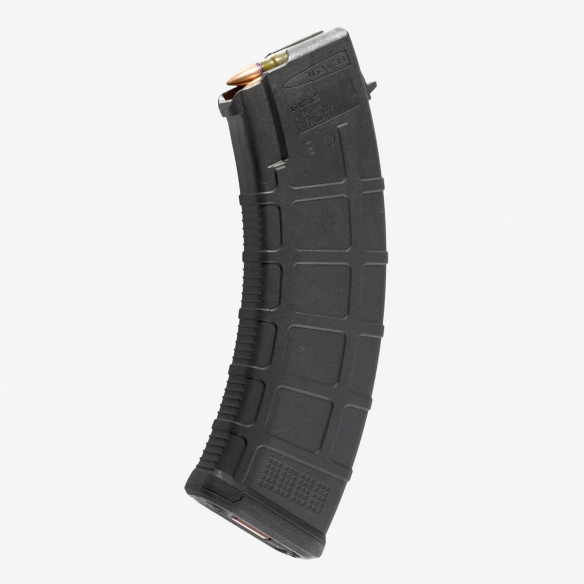
Categories:
Gun magazines, also known as ammunition magazines or clips, play a crucial role in determining the number of rounds a gun can hold before reloading. The capacity of these magazines has been a subject of intense debate and controversy in the realm of gun control. Capacity regulations refer to laws and restrictions imposed on the size or number of rounds that gun magazines can legally hold.
The issue surrounding capacity regulations stems from concerns over public safety and the potential for mass shootings. Advocates argue that limiting magazine capacity can be an effective measure to reduce casualties in such incidents, as it may provide more opportunities for intervention or escape during reloading pauses. On the other hand, opponents contend that these restrictions infringe upon their Second Amendment rights, impeding their ability to defend themselves adequately.
Historically, there has been significant variation in capacity regulations across different jurisdictions within countries like the United States. Some states have enacted strict limitations on magazine capacities, allowing only a limited number of rounds per magazine. In contrast, others have implemented no restrictions at all. This disparity has led to ongoing debates regarding the effectiveness and necessity of such regulations.
Internationally, several countries have implemented stringent capacity regulations on gun magazines. For instance, Canada limits handguns to ten rounds per magazine while Australia restricts guns to five or fewer rounds for semi-automatic long guns and ten rounds for handguns.
This subtopic aims to explore different aspects related to capacity regulations of gun magazines around the world. It will delve into various arguments put forth by both proponents and opponents while examining how such laws impact public safety and individual rights. By analyzing existing legislation and its implications, this text seeks to provide a comprehensive understanding of this contentious issue.
In the ongoing debate surrounding gun regulations, one area of contention is the capacity limitations imposed on gun magazines. A gun magazine refers to a device that holds and feeds ammunition into a gun. Capacity limitations dictate the maximum number of rounds a magazine can hold, with proponents arguing that these restrictions play a crucial role in promoting public safety. The primary rationale behind capacity limitations is to mitigate the potential harm caused by mass shootings and reduce overall gun violence.
By restricting the number of rounds a gun can discharge without reloading, policymakers aim to enhance public safety by minimizing casualties during such incidents. It is argued that reducing magazine capacities forces shooters to pause and reload more frequently, thereby providing opportunities for potential victims to escape or intervene. Another key aspect of capacity limitations is their potential impact on self-defense situations.
Advocates argue that imposing restrictions on magazine capacities ensures individuals have ample time to react or seek refuge during an attack. By preventing assailants from firing an excessive number of rounds without reloading, these regulations create vital windows for potential victims to defend themselves or for law enforcement authorities to respond effectively. Moreover, proponents contend that limiting magazine capacities can help prevent impulsive acts of violence or crimes of passion.
By increasing the effort required for reloading, individuals may have more time to reconsider their actions or be dissuaded from carrying out violent acts altogether. This delay allows law enforcement officers additional opportunities to intervene and prevent tragic outcomes. Critics argue that capacity limitations infringe upon Second Amendment rights, claiming they do not effectively deter criminals who may illegally obtain larger-capacity magazines regardless of legal restrictions.
However, proponents assert that while these regulations may not eliminate all instances of violence, they are an essential step towards reducing the severity and impact of mass shootings and other gun-related crimes.
The regulation of gun magazine capacity is a contentious issue that has evolved over time, reflecting changing societal attitudes and concerns regarding public safety. Understanding the historical context of capacity regulations provides valuable insight into the development of these policies. In the early days of gun production, there were no specific regulations on magazine capacity. Guns were primarily single-shot guns, limiting the number of rounds an individual could fire before reloading.
However, technological advancements in the late 19th and early 20th centuries led to the introduction of semi-automatic pistols and rifles with higher ammunition capacities. During World War I and World War II, military forces began utilizing guns with detachable magazines capable of holding multiple rounds. This new technology raised concerns about battlefield effectiveness and prompted some nations to consider adopting restrictions on magazine capacities for military use.
Following the wars, civilian guns manufacturers started producing semi-automatic handguns with detachable magazines for civilian use. In response to rising crime rates in the 1960s and 1970s, several U.S. states enacted laws restricting magazine capacities as a measure to curb violence. California was among the first states to introduce such legislation in 1982 when it limited handgun magazines to a maximum capacity of ten rounds.
In subsequent years, other states followed suit with varying restrictions on magazine capacities for both handguns and long guns. The motivations behind these regulations often revolved around public safety concerns, aiming to reduce mass shootings or provide law enforcement officers more opportunities to intervene during active shooter scenarios. The debate surrounding capacity regulations intensified in recent decades due to high-profile mass shootings that involved guns equipped with large-capacity magazines.
Advocates argue that limiting magazine capacities can save lives by reducing casualties during shooting incidents, while opponents maintain that such restrictions infringe upon Second Amendment rights without significant impact on preventing crimes.
High-capacity magazines, which hold more ammunition than standard magazines, have been the subject of much debate in discussions surrounding gun control and public safety. Advocates argue that these magazines provide a sense of security and self-defense for gun owners, while opponents claim that they pose a significant threat to public safety. Examining the impact of high-capacity magazines on public safety is crucial in order to inform effective gun regulations.
One concern regarding high-capacity magazines is their potential to facilitate mass shootings. Studies have shown that shooters equipped with these magazines are able to fire more rounds without reloading, leading to higher casualty rates in a shorter period. The ability to shoot multiple rounds rapidly can create chaos and limit opportunities for intervention by law enforcement or individuals attempting to escape harm.
Restricting access to high-capacity magazines could potentially reduce the lethality of mass shootings by forcing shooters to pause and reload, providing crucial moments for intervention.
Furthermore, high-capacity magazines may also contribute to an increase in crime rates. Criminals who possess these larger capacity magazines may be emboldened by the ability to carry out more prolonged attacks before needing to reload. This can lead to more casualties during criminal activities such as armed robberies or home invasions.
Public safety officials often argue that limiting magazine capacity can help prevent tragedies by reducing the number of rounds available at any given time. By restricting magazine capacity, law enforcement agencies hope to minimize the potential harm posed by an individual or a group intent on carrying out acts of violence.
In conclusion, high-capacity magazines present significant concerns regarding public safety. Their ability to enable rapid-fire shooting and prolong criminal activities poses serious threats not only during mass shootings but also in everyday criminal situations. Understanding their impact is essential for policymakers when considering regulations aimed at enhancing public safety while balancing individual rights and interests within society.
1. Public safety: One of the primary arguments for stricter capacity regulations on gun magazines is the enhancement of public safety. Limiting the number of rounds a magazine can hold reduces the potential harm that can be inflicted in a single shooting incident. By restricting magazine capacity, it becomes more difficult for individuals with malicious intent to cause mass casualties quickly and efficiently.
This, in turn, provides law enforcement and first responders with more time to react and mitigate the situation, potentially saving lives. 2. Prevention of high-capacity shootings: High-capacity magazines have been used in numerous mass shootings, allowing perpetrators to fire a large number of rounds without reloading frequently. By imposing stricter capacity regulations, it becomes harder for individuals to carry out such devastating attacks.
Restricting magazine capacities forces shooters to pause and reload more frequently, providing opportunities for bystanders or law enforcement to intervene or escape. 3. Reducing lethality in self-defense scenarios: Advocates argue that most self-defense situations rarely require firing more than a few rounds at an assailant. By limiting magazine capacities, there is less risk of excessive force being used during these encounters, reducing the potential harm caused by accidental or indiscriminate firing.
4. Addressing criminal use: Stricter capacity regulations can help deter criminals from using guns equipped with high-capacity magazines by making them less readily available. It also aids law enforcement in identifying individuals who possess such magazines illegally, enabling proactive measures against potential threats. 5. Aligning with public opinion: Numerous polls indicate that a majority of Americans support stricter gun control measures, including regulations on high-capacity magazines.
Implementing stronger restrictions on magazine capacities would reflect popular sentiment and demonstrate policymakers’ commitment to addressing public concerns regarding gun violence.
While proponents of capacity regulations for gun magazines argue that such limitations can help reduce the potential lethality of mass shootings, there are several counterarguments to consider. These counterarguments highlight potential drawbacks and limitations of implementing capacity restrictions. Firstly, opponents argue that capacity limitations on gun magazines undermine the Second Amendment rights of law-abiding citizens. They contend that the right to self-defense is a fundamental constitutional right, and restricting magazine capacities would limit citizens’ ability to effectively protect themselves and their families in high-pressure situations.
Additionally, they argue that these restrictions disproportionately affect vulnerable individuals who may be physically weaker or face multiple assailants. Furthermore, critics point out that criminals who are intent on carrying out mass shootings will not be deterred by magazine capacity restrictions. Those with criminal intent would likely find alternative methods to bypass such laws or acquire larger-capacity magazines through illegal means.
Consequently, they argue that such regulations primarily impact law-abiding citizens while doing little to prevent criminals from accessing guns with large-capacity magazines. Another counterargument is related to practicality and enforcement difficulties. Critics contend that enforcing capacity regulations would be challenging due to the vast number of existing guns and high-capacity magazines already in circulation. This raises concerns about how effectively authorities could confiscate or regulate these items without infringing on individual rights.
Moreover, opponents suggest that focusing on magazine capacities diverts attention from addressing the root causes of gun violence, such as mental health issues or social factors. They argue for a comprehensive approach that encompasses mental health support systems, early intervention programs, and improved background checks rather than solely focusing on limiting magazine capacities.
Gun magazines, also known as ammunition feeding devices, play a crucial role in determining the capacity and firing capabilities of guns. In order to address concerns surrounding public safety and the potential for mass shootings, many countries have implemented laws and restrictions regarding the capacity of gun magazines. These regulations aim to strike a balance between ensuring citizens’ rights to bear arms while minimizing the risks associated with high-capacity magazines.
One approach taken by several countries is to impose limits on magazine capacity. For instance, Germany restricts civilian gun magazines to a maximum capacity of 10 rounds, while Canada limits magazine capacities for handguns at 10 rounds and rifles at 5 rounds for semi-automatics and 10 rounds for bolt-action rifles. Similarly, Australia implemented strict gun control measures following a mass shooting in 1996 that included limiting magazine capacities to no more than 10 rounds.
In contrast, some countries have chosen not to regulate magazine capacities outright but instead require individuals to obtain specific licenses or permits for high-capacity magazines. This approach is observed in certain states within the United States, where ownership of large-capacity magazines may be legal if acquired before certain cut-off dates or if the owner possesses a special license. The reasoning behind these regulations is rooted in public safety concerns.
Lawmakers argue that limiting magazine capacities can potentially reduce the number of casualties during mass shootings by forcing assailants to reload more frequently, providing opportunities for intervention or escape. However, critics argue that such restrictions infringe upon Second Amendment rights and do not effectively prevent criminals from obtaining high-capacity magazines through illegal means. They contend that responsible gun owners should not be penalized due to the actions of a few individuals.
Ultimately, examining existing laws and restrictions on gun magazines highlights an ongoing debate between preserving individual freedoms and protecting public safety.
When it comes to gun control, different countries have adopted varying approaches to regulate magazine capacities. While the United States has relatively lenient regulations in this regard, many other nations have implemented stricter measures to limit the number of rounds a gun can hold. This section will explore some international perspectives on magazine capacity regulations.
In Australia, for instance, a national guns agreement was introduced following the Port Arthur massacre in 1996. As part of this agreement, restrictions were placed on magazine capacities, limiting them to ten rounds for self-loading centerfire rifles and shotguns. New Zealand also implemented similar measures after the Christchurch mosque shootings in 2019.
In Europe, several countries have enacted stringent regulations on gun magazine capacities. For instance, Germany imposes a maximum limit of ten rounds for handguns and rifles used by civilians. France follows a similar approach with its law capping magazines at ten rounds for semi-automatic guns.
On the other hand, some European countries go even further with their restrictions. Norway allows civilians to possess guns with limited magazine capacities ranging from two to fifteen rounds depending on the type of gun and intended use. In Sweden, semi-automatic guns are limited to a maximum capacity of five rounds.
Moving outside of Europe, Canada has also implemented strict regulations on gun magazines. The country restricts handgun magazines to ten rounds and prohibits any magazine capable of holding more than five cartridges for semi-automatic centerfire rifles or shotguns.
These international examples highlight how various nations have taken diverse approaches in regulating magazine capacities as part of their broader gun control policies. The contrasting regulations reflect different cultural attitudes towards guns and public safety concerns across the globe.
Enforcing and implementing capacity regulations for gun magazines presents a myriad of challenges that policymakers, law enforcement agencies, and society as a whole must grapple with. These challenges arise due to the complexities surrounding the manufacturing, distribution, possession, and use of guns. Here are some key challenges that emerge in the enforcement and implementation of capacity regulations:
1. Definition and identification: One challenge lies in defining what constitutes a high-capacity magazine. Varying definitions across jurisdictions can lead to confusion among law enforcement officials tasked with enforcing these regulations. Additionally, identifying whether an individual possesses or is using a prohibited magazine can be difficult without proper documentation or visual confirmation. 2. Compliance and availability: The effectiveness of capacity regulations heavily relies on individuals’ compliance with the law.
Despite restrictions on high-capacity magazines, they may still be available through illegal channels or existing stockpiles. The presence of such magazines within communities poses significant challenges for law enforcement agencies attempting to enforce these regulations comprehensively. 3. Enforcement resources: Adequate resources are crucial for effectively enforcing capacity regulations. Law enforcement agencies may face resource constraints in terms of personnel, funding, training programs, or access to advanced technology required to detect illegal magazines accurately.
4. Constitutional considerations: Another significant challenge involves navigating constitutional rights related to gun ownership while balancing public safety concerns associated with high-capacity magazines. Striking a balance between constitutional rights guaranteed by the Second Amendment and implementing necessary restrictions is a complex task that often faces legal scrutiny. 5. Interstate smuggling: Limiting the flow of illegal guns accessories across state borders can prove challenging due to varying laws between jurisdictions.
Smuggling networks can exploit these differences by transporting prohibited magazines from regions with more lenient legislation into areas where they are strictly regulated.
As discussions surrounding gun regulations continue to evolve, one area of focus has been the capacity regulations of gun magazines. While current laws vary across jurisdictions, there are ongoing debates regarding potential reforms that could address concerns related to mass shootings and public safety. Several future considerations for gun magazine capacity regulations have emerged, aiming to strike a balance between individual rights and community safety.
One potential reform is the implementation of stricter limits on magazine capacities. Proponents argue that reducing the number of rounds a magazine can hold would help mitigate the devastating impact of mass shootings by forcing shooters to pause and reload more frequently. By introducing such restrictions, it is believed that potential victims would have more opportunities to escape or intervene during these critical moments.
Another consideration is the development of smart gun technology integrated into magazines. This innovation could involve creating electronically controlled magazines that limit firing rates or only allow authorized users access. Advocates argue that this approach could prevent unauthorized individuals from using high-capacity magazines while still allowing responsible gun owners to maintain their ability for self-defense.
Furthermore, policymakers might explore implementing stricter background checks and licensing procedures specifically for high-capacity magazine ownership. This approach aims to ensure that those who possess these magazines have undergone rigorous screening processes and training, reducing the risk of misuse or illegal acquisition.
Additionally, some propose incentivizing voluntary surrender programs for high-capacity magazines already in circulation. These programs could provide gun owners with alternatives such as financial compensation or the opportunity to exchange their high-capacity magazines for lower-capacity ones without penalty.
While these potential reforms are not without controversy, they represent important considerations in ongoing discussions about balancing individual rights with public safety concerns related to gun magazine capacities. As lawmakers and stakeholders continue exploring ways to prevent mass shootings and enhance community safety, finding common ground on such reforms will be crucial in shaping effective policies moving forward.








Colt
Colt M4 Carbine
Colt LE6920
Colt AR-15 A4
Daniel Defense
DDM4 V7
DDM4 V9
DDM4 V11
DDM4 ISR (Integrally Suppressed Rifle)
Smith & Wesson (S&W)
M&P15 Sport II
M&P15 Tactical
M&P15T
Bravo Company Manufacturing (BCM)
BCM Recce-16
BCM Recce-14
BCM MCMR Series
Aero Precision
M4E1 Series
AC-15
AR15 Pistol (Various Configurations)
Ruger
Ruger AR-556
Ruger SR-556
Ruger AR-556 MPR (Multi-Purpose Rifle)
Springfield Armory
Saint Victor
Saint Edge
Saint AR-15
PSA (Palmetto State Armory)
PSA PA-15
PSA AR-V
PSA Jakl (AR Pistol)
FN America
FN 15 Tactical Carbine
FN 15 Patrol
FN 15 DMR
Wilson Combat
Recon Tactical
Super Sniper
Protector Carbine
SIG Sauer
SIG M400 Tread
SIG M400 Elite
SIG M400 SDI
LWRC International
IC DI (Direct Impingement)
IC SPR
IC A5
Bushmaster Guns
XM-15 QRC
Bushmaster MOE
XM-15 Patrolman
Rock River Arms
LAR-15 Entry Tactical
LAR-15 Predator
LAR-15 Elite Comp
Stag Arms
Stag 15 Tactical
Stag 15L (Left-Handed Models)
Stag 15 Valkyrie
Noveske Rifleworks
Noveske Gen 4 N4
Noveske Space Invader (AR Pistol)
Noveske Recon
Anderson Manufacturing
AM-15 Optic Ready
AM-15 M4 Carbine
AM-15 Precision Rifle
Adams Arms
AA-15 Piston Rifle
P2 AARS (Adams Arms Rifle Series)
Black Rain Ordnance
SPEC15 Series
BRO Predator
Fallout 15
Diamondback Guns
DB15 Series
DB15CCMLB
DB15EB
Del-Ton Inc.
DTI-15
Del-Ton Echo 316H
Sierra 316M
Windham Weaponry
Windham SRC
Windham VEX-SS
Windham RMCS-4 (Caliber Conversion System)
Christensen Arms
CA-15 G2
CA-15 Recon
CA-15 Titanium Edition
Patriot Ordnance Factory (POF-USA)
Renegade Plus
P415 Edge
Revolution DI
LaRue Tactical
PredatAR
OBR (Optimized Battle Rifle)
LaRue Stealth 2.0
Battle Arms Development
Workhorse Patrol Carbine
BAD556-LW (Lightweight)
Authority Elite Rifle
Faxon Guns
Ascent AR-15
FX-19 (AR Pistol)
Streamline Ultralight Series
KE Arms
KE-15 SLT (Super Lightweight Tactical)
KE-15 Scout Carbine
Primary Weapons Systems (PWS)
MK1 MOD 2-M
MK116 PRO
MK107 (Piston AR Pistol)
ZEV Technologies
ZEV Core Elite Rifle
ZEV AR15 Billet Rifles
Franklin Armory
BFSIII AR-C1
Militia Model
F17-L (Chambered in .17 WSM)
Seekins Precision
SP15 DMR
NX15 Skeletonized Rifle
Havak Bravo
Aero Precision (Additional Models)
EPC-9 (Pistol Caliber ARs)
VG6 AR Rifles
Barrett Guns
REC7 DI
REC7 Gen II
CMMG
MK4 RCE
Resolute 300
Banshee (AR Pistol)
DPMS Panther Arms
Panther Oracle
Panther LR-308
H&K (Heckler & Koch)
HK MR556A1
HK416 (Military Variant)
Rock Island Armory (Armscor)
VR-80 Tactical AR (Shotgun AR Platform)
Troy Industries
Troy SPC-A3
Troy PAR (Pump Action AR)
Wilson Tactical
Tactical Recon AR
Protector Series
F1 Guns
FDR-15 Skeletonized Rifle
BDRx-15 Series
Juggernaut Tactical
JT-15
JT-10 Precision Rifle
AeroSurplus
Surplus AR-15 Rifles (Budget Models)
Thunder Tactical
AR-15 Basic Carbine
Tactical Builder Sets
Radical Guns
RF-15
Forged AR-Series
Dark Storm Industries
DS-15 Featureless Rifles
DS-10 Typhoon
DRD Tactical
Paratus
Aptus AR Rifles
Bear Creek Arsenal
BCA-15
AR Complete Upper Builds
Aero Survival Rifles (ASI)
ASR Tactical Series
Tactical Edge
WARFIGHTER Series
AR-15 Lightweight Rifles
Lone Star Armory
TX15 DMR
TX15 Carbine
HERA Arms
HERA H7
HERA AR-15 Lower Builds
IWI (Israeli Weapon Industries)
Zion-15
DRD Tactical
Tactical Modular Rifles
Quick-Takedown Rifles
V Seven Weapons
1776 Rifle
Hyperlite Rifle
Core Rifle Systems
Core15 Tac III
Core15 Patrol Rifle
Armalite (Original AR-15 Creator)
M15 Tactical
M15 A4 Carbine
DEF15 (Defensive Sporting Rifle Series)
PSA (Palmetto State Armory Additional Models)
PSAK-47 Hybrid (AR-AK Style Hybrid)
PSA Dagger (Pistol Caliber Configurations)
Odin Works
OTR-15
Odin Recon Rifle
Maxim Defense
MDX-508 PDX (Compact AR Pistol)
MDX-510 Rifle